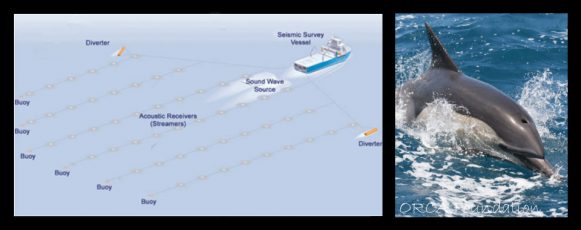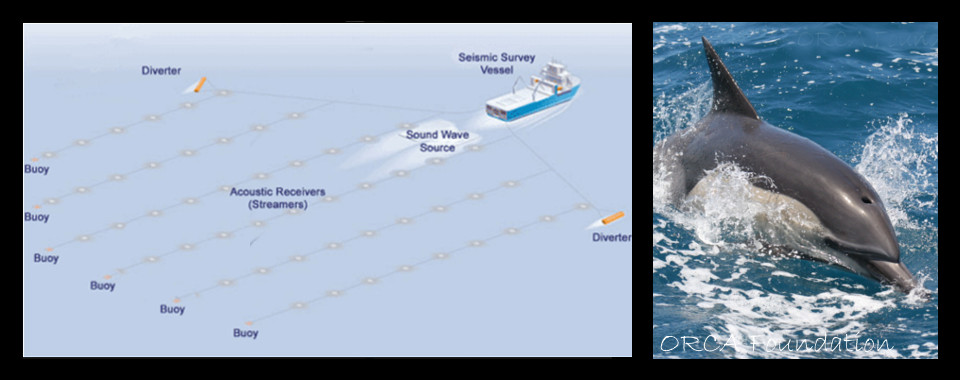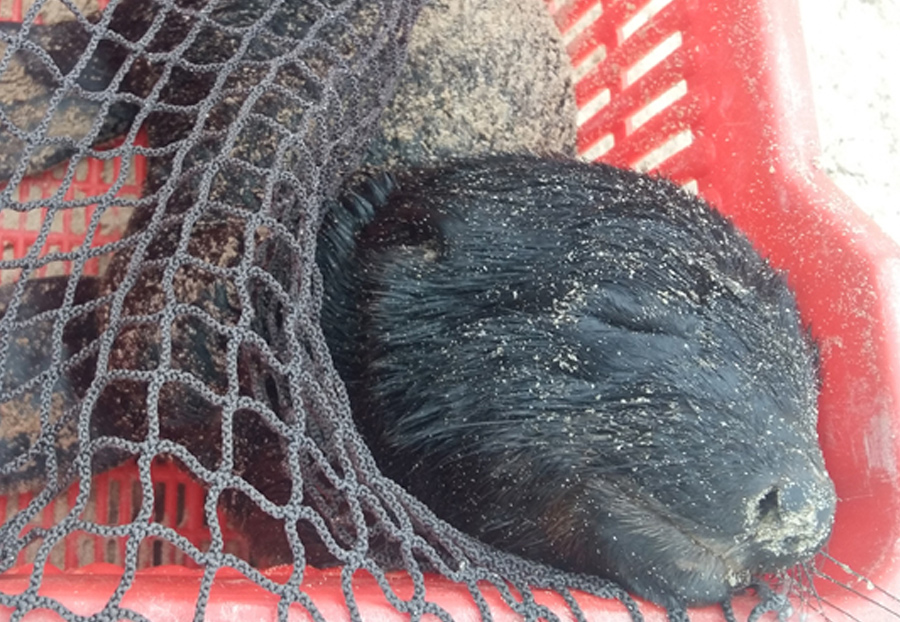Seismic surveys – the full story?

Humans have moved into all areas of the world, and even if they are not present, evidence of them is. The marine environment is no different. Marine litter has been of foremost concern but there is growing interest and concern over anthropogenic noise in the marine environment. Seismic surveys, shipping, high power sonar, and echo sounders among other sources all produce a large amount of acoustic energy, and are all contributing to increasing levels of ambient noise. Of these, seismic surveys produce some of the most intense manmade sounds in the marine environment, and often operate over a large area for an extended period of time. However, there is a lot of uncertainty surrounding the characteristics of the seismic signal at various ranges, depths, and higher frequencies. Additionally, acoustic propagation under varying conditions is also uncertain. Beyond these, extensive uncertainty exists regarding biological factors affected by seismic surveys. Potential effects can range from no response, to death. In-between the extremes effects include: damage to body tissues that impair, and could kill, the animal; temporary or permanent hearing damage; startle and fright; behavioural changes to avoidance; behavioural changes from not hearing environmental sounds, or conspecific communication; changes in vocalisation, among others. Some findings have been contradictory, and the biological significance of the effects are not clear, but when important processes like feeding and migration are altered the population is adversely affected. Marine species, spending most or all of their time at sea and underwater, can be very difficult research subjects which accounts for the contradictions and uncertainty. Methods for study include captive studies, extrapolation and modelling, and observation in the field (visual observation, passive acoustic monitoring, telemetry, experimental control). All of these methods have shortcomings, and none are able to clearly elucidate the full and unequivocal extent of the effects and responses of marine species to anthropogenic noise, seismic survey acoustic signals in particular.
Despite the uncertainty surrounding the effects of anthropogenic noise, and seismic survey acoustic signals in particular, a precautionary approach to management and regulation must be taken.
This is the last of a series of blogs looking into seismic surveys in a marine environment.
Written by: Minke Witteveen
For further reading:
- Gordon, J.C.D., Gillespie, D., Potter, J., Frantzis, A., Simmonds, M.P., Swift, R. and Thompson, D. 2004. A review of the effects of seismic survey on marine mammals. Marine Technology Society Journal 37: 14-32.
- Jasny, M. 2010. Boom, Baby, Boom: The Environmental Impacts of Seismic Surveys. Accessed: 2017-01-14. URL: https://www.nrdc.org/resources/boom-baby-boom-environmental-impacts-seismic-surveys
- Popper, A.N., Smith, M.E., Cott, P.A., Hanna, B.W., MacGillivray, A.O., Austin, M.E., Mann, D.A. 2005. Effects of exposure to seismic airgun use on hearing of three fish species. Journal of the Acoustical Society of America 117: 3958-3971.




